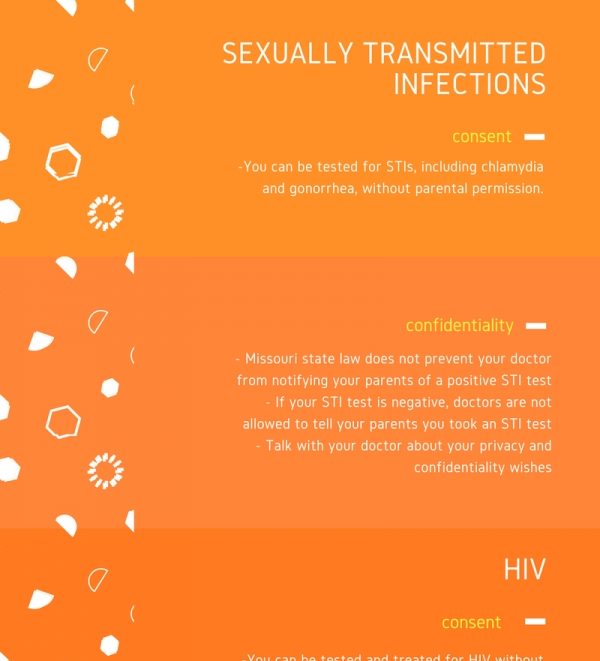

The month of April was dedicated to the awareness of Sexual transmitted Infections (STIs) and sexually transmitted diseases (STDS), so we wanted to make sure you start May up to date!
What is an STI?
According to the American Sexual Health Association, sexually transmitted infections are infections caused by a transmitted virus or bacteria that can be spread through sexual contact. STIs were previously referred to as STDs, but were changed to STIs due to the term “disease” indicating an apparent medical problem that has no obvious symptoms; and most STIs do not show signs until they reach a critical stage, then it is classified as a STD. Both STIs and STDs can be passed through sexual contact. Last year, the World Health Organization (WHO) reported that chlamydia, gonorrhea and syphilis are starting to become resistance to the antibiotics used to treat the infections. The 2015 Missouri Youth Risk Behavior Survey showed that high school students who report having sexual intercourse declined from 46.7 percent to 37.7 percent from 2005 to 2015, and the number of high school students who report using a condom during sex decreased from 67.2 to 56.4. The Centers for Disease Control and Prevention (CDC) reported that there were 19538 chlamydia cases in Missouri for people who were between the ages 15-24 and there were 4477 Gonorrhea cases. In 2016, the Saint Louis Dispatch reported that the St. Louis region ranked 8th for gonorrhea and 17thfor chlamydia. While the current statistics may be discouraging, we must continue to spread awareness and positive prevention messaging to prevent the rates from increasing. To find out the current STD rates in Missouri by county, click here.
Protecting Yourself
Preventing STIs/STDs first starts with education. Parents, educators, community members and peers can join the fight against STIs/STDs by educating one another and by having honest conversations about STIs/STDs. Abstinence is an safe and effective option for STIs/STDs prevention, but there are others, including barrier methods. When condoms are used correctly (perfect use), there is a 98% percent success rate. For more information on how to properly use condoms, click here.
Resources & Useful Links
Many organizations throughout the state are dedicated to ensuring that teens receive medically-accurate information about STIs/STDs and preventing STIs/STDs. Health Departments often provide information on free condom distribution locations. In St. Louis, visit stlcondoms.com and in Kansas City, visit http://igotmineinkc.org/
STDs among Young People 15-24 Years of Age in Missouri 2013
